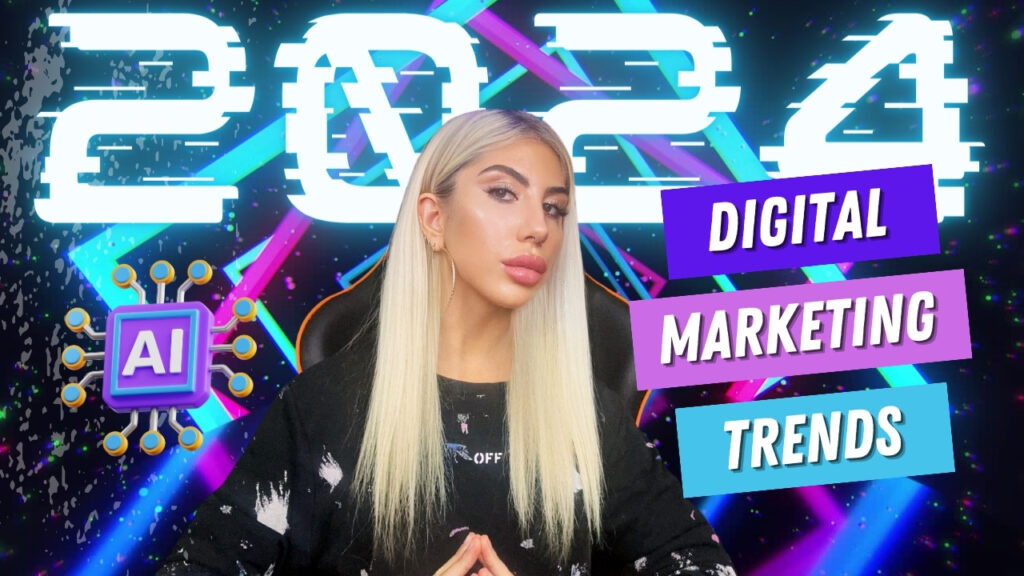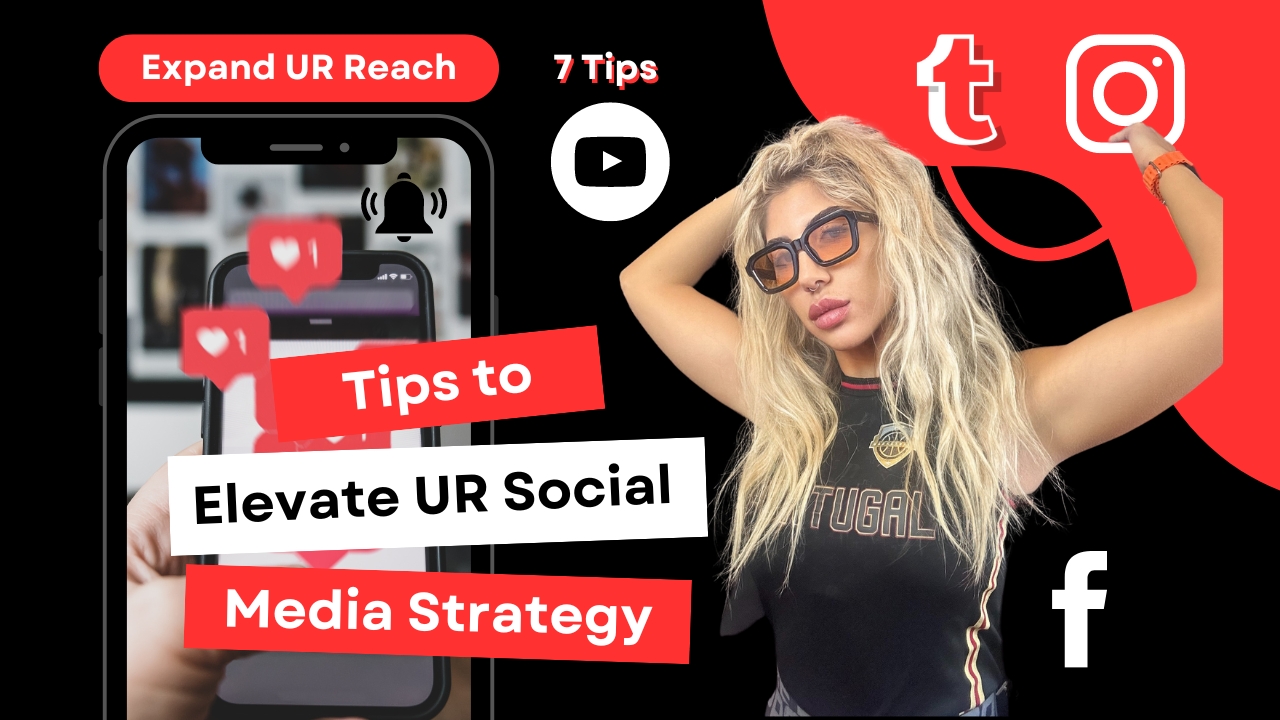2023 is coming to an end and as we are stepping into 2024 we need to present you the most important marketing trends that will redefine the industry in 2024.
We’ve gathered a wealth of knowledge and we’re thrilled to share this exclusive sneak peek of the future of marketing with you. The digital landscape is constantly evolving, requiring marketers to remain agile and forward thinking. The surge we are likely to witness in 2024 will be a testament to this constant shift.
1. Application of artificial intelligence in marketing
Generative AI is already changing the way that companies market to consumers. The use of AI algorithms to examine consumer behaviour and search patterns, leveraging data harvested from social media platforms is instrumental. This will enable businesses to gain a deeper comprehension of how customers discover their products and services, consequently improving the customer journey.
When it comes to AI, brands are using this new technology to create visual and written content: from images, videos, ads,
website articles to newsletter campaigns and SEO. Generative AI is helping the marketing processes but problem-solving, critical thinking and creative abilities still need the human factor.
The benefit of AI is that it speeds up a lot of the manual processes, allowing creatives to work more effectively by freeing up more valuable time to experiment and create new ideas. In essence, AI will be the game changer in delivering personalized experiences, driving targeted advertising and taking customer service to the next level.
2. The rise of voice search
The widespread use of voice search is our next point. Thanks to voice assistants, consumers are starting to utilize more voice commands in their daily lives; for things like online shopping and generally discovering what they need, like local businesses.
Marketers need to adapt their SEO strategies to follow this shift. The strategies used now include key phrases and long tail keywords that adapt to the conversational tone typically used in voice searches.
People are becoming more used to the voice technologies, and they are using more natural language questions and longer phrases in their searches. This is pressing marketers to readapt their keyword strategies and focus on phrases and questions that occur in everyday conversations.
Artificial intelligence also plays a central role in voice search. AI technologies like natural language processing are helping in understanding the context and intention behind voice searches, making the search results more accurate. This integration of AI has improved voice search, making it more user friendly, accurate and sophisticated. Looking into the future of Voice Search, marketers need to adapt and improve their strategies to stay relevant.
3. Use of Messaging Apps
Brands and companies want to chat to their customers so they leverage channels like WhatsApp, Facebook Messenger and SMS. These offer a quick and easy way to connect with the people that are most important to them.
Messaging apps have gone mainstream. We have seen many new trends in the apps like Instagram introducing broadcast channels to enable creators engage with their audience at a deeper level. Of course, e-mail marketing continues to be a useful way of delivering information, but messaging apps are more successful when it comes to scheduling meetings, booking appointments, putting reminders, or announcing new offers for products or services.
In 2024, we are going to see more brands incorporating these messaging apps into the social media marketing strategies! This is because they offer the opportunity to engage in a personal, direct way and facilitate communications in a way that no other platforms have done so far.
4. The creator economy explodes
The creator economy is a movement years in the making, but it is a movement that continues to grow. The creator economy includes people from all sectors, like content creators, solopreneurs, entrepreneurs, small business owners and employees. This rapid expansion of the creator economy is based on values like authenticity, freedom of expression and informality.
In 2023, and even more in 2024, brands prioritize creator-style videos. People want to see something real and relatable, so brands prioritise authentic creators and user-generated content.
All brands, even luxury are now using more ‘content creator style’videos rather than only high end Polished content. From global campaigns to behind-the-scenes, we expect to enjoy a lot more creator style videos going forward.
5. Social commerce has a great impact
Social media platforms are no longer just places for sharing photos and updates, they are now fully adapted marketplaces. Brands can now sell directly on social media platforms, creating a unique and very easy shopping experience for users.
This trend will grow exponentially as more platforms offer selling features and consumers become more comfortable with the process.
6. Platform Specificity Fades
Regarding the posting of content and ads, the platform specificity is fading. Now, more and more social media platforms are sharing similar features and content.
Instagram launched reels, in order to follow the trend for short form videos like TikTok. Also we have Threads: another Instagram off frame that invites users to post text updates, offering a Twitter style microblogging experience
LinkedIn was considered very professional and traditional in its approach. Now it is gradually transitioning from its formal character to something a bit more personal
Typical audiences have also started to shift, with older generations now using platforms like TikTok which initially attracted Gen Z.
Following these changes, social media managers have started to reconsider and reframe their strategies and as a result of the platform specificity fading, they repurpose content from one form to another more easily and effectively.
7. Escalating significance of purpose-driven marketing
In today’s market, purpose driven marketing cannot be ignored by brands and businesses. People are not just buyers anymore; they are conscious participants in the global market.
Consumers are showing a strong preference for companies that offer quality products or services, but they want brands that align with their personal beliefs and that contribute positively to the society and to the environment.
The impact of purpose driven marketing on consumer behavior is huge. Brands manage to make customers into advocates only if they promote trust and loyalty. Purpose-driven marketing is here to stay and brands that use it have a significant advantage over their competitors.
8. SEO and Social Media Merge
Social media platforms now serve as SEO engines in their own right. Tik Tok and Instagram for example are increasingly being used to find things like restaurants, bars, experiences, brands etc. People traditionally would search only Google and Bing for these things, but now things have changed.
Posts from Pinterest, Youtube, LinkedIn and TikTok are increasingly showing up at the top of the search results and marketers are taking notice and starting to adapt.
The social media platforms serve well as search engines because their ever evolving algorithm knows very well what to serve to each person. The information and content in these platforms is always up to date and is delivered in an easy and quick way.
9. Growing of immersive technologies like virtual and augmented reality
Immersive technologies are evolving into the new standard. They offer unique ways to trigger customers, creating immersive experiences that are both captivating and unforgettable.
Virtual Reality allows brands to construct an entirely immersive environment for their customers, which can be used for virtual tours, product demonstrations, or even interactive storytelling.
On the contrary, augmented reality superimposes digital components onto the physical world. AR can be utilized for product visualization, interactive advertisements, or enhancing the retail experience. AR is gaining momentum in all sectors and it is highly used now in sectors like retail and real estate.
More brands are harnessing immersive technologies to offer unique and unforgettable experiences to their customers!
10. Marketing personalization
Immersive technologies are no longer a standalone concept, but are now increasingly intertwined with personalized marketing strategies.
Immersive technologies are aiding personalised marketing. The options are limitless; virtual stores personalised to your needs, AR applications that present you with personalised product recommendations and so much more. Brands that use Immersive technologies and personalisation can give engaging, unique experiences to the audience and stand out from the competitors.
Marketing personalisation is a strategy that uses data to target and retarget leads with a brand message that speaks directly to specific customers, interests, demographics and buying behaviors.
With a successful personalized marketing strategy, customers feel like the brand message was made just for them, leading to their increasing engagement and loyalty. Personalization in marketing is becoming very important and brands that can effectively implement it, will have a significant advantage.
Conclusion
In conclusion, the digital marketing landscape in 2024 looks like it will be dominated by AI, voice search, messaging apps, creator economy, social commerce, Platform Specificity Fading, purpose driven marketing, SEO and Social Media Merge, immersive technologies, and marketing personalization.


